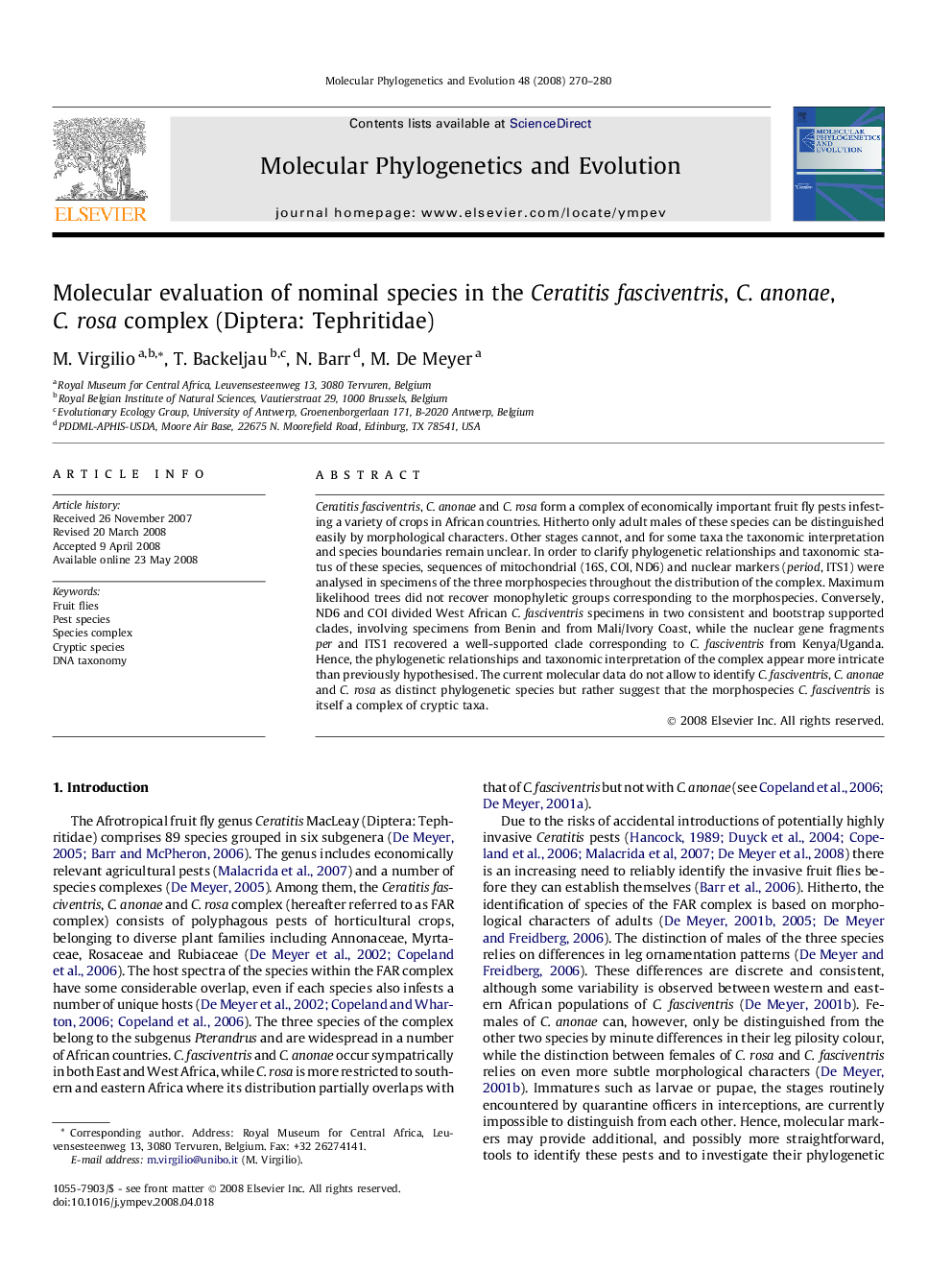| Article ID | Journal | Published Year | Pages | File Type |
|---|---|---|---|---|
| 2835207 | Molecular Phylogenetics and Evolution | 2008 | 11 Pages |
Ceratitis fasciventris, C. anonae and C. rosa form a complex of economically important fruit fly pests infesting a variety of crops in African countries. Hitherto only adult males of these species can be distinguished easily by morphological characters. Other stages cannot, and for some taxa the taxonomic interpretation and species boundaries remain unclear. In order to clarify phylogenetic relationships and taxonomic status of these species, sequences of mitochondrial (16S, COI, ND6) and nuclear markers (period, ITS1) were analysed in specimens of the three morphospecies throughout the distribution of the complex. Maximum likelihood trees did not recover monophyletic groups corresponding to the morphospecies. Conversely, ND6 and COI divided West African C. fasciventris specimens in two consistent and bootstrap supported clades, involving specimens from Benin and from Mali/Ivory Coast, while the nuclear gene fragments per and ITS1 recovered a well-supported clade corresponding to C. fasciventris from Kenya/Uganda. Hence, the phylogenetic relationships and taxonomic interpretation of the complex appear more intricate than previously hypothesised. The current molecular data do not allow to identify C. fasciventris, C. anonae and C. rosa as distinct phylogenetic species but rather suggest that the morphospecies C. fasciventris is itself a complex of cryptic taxa.
